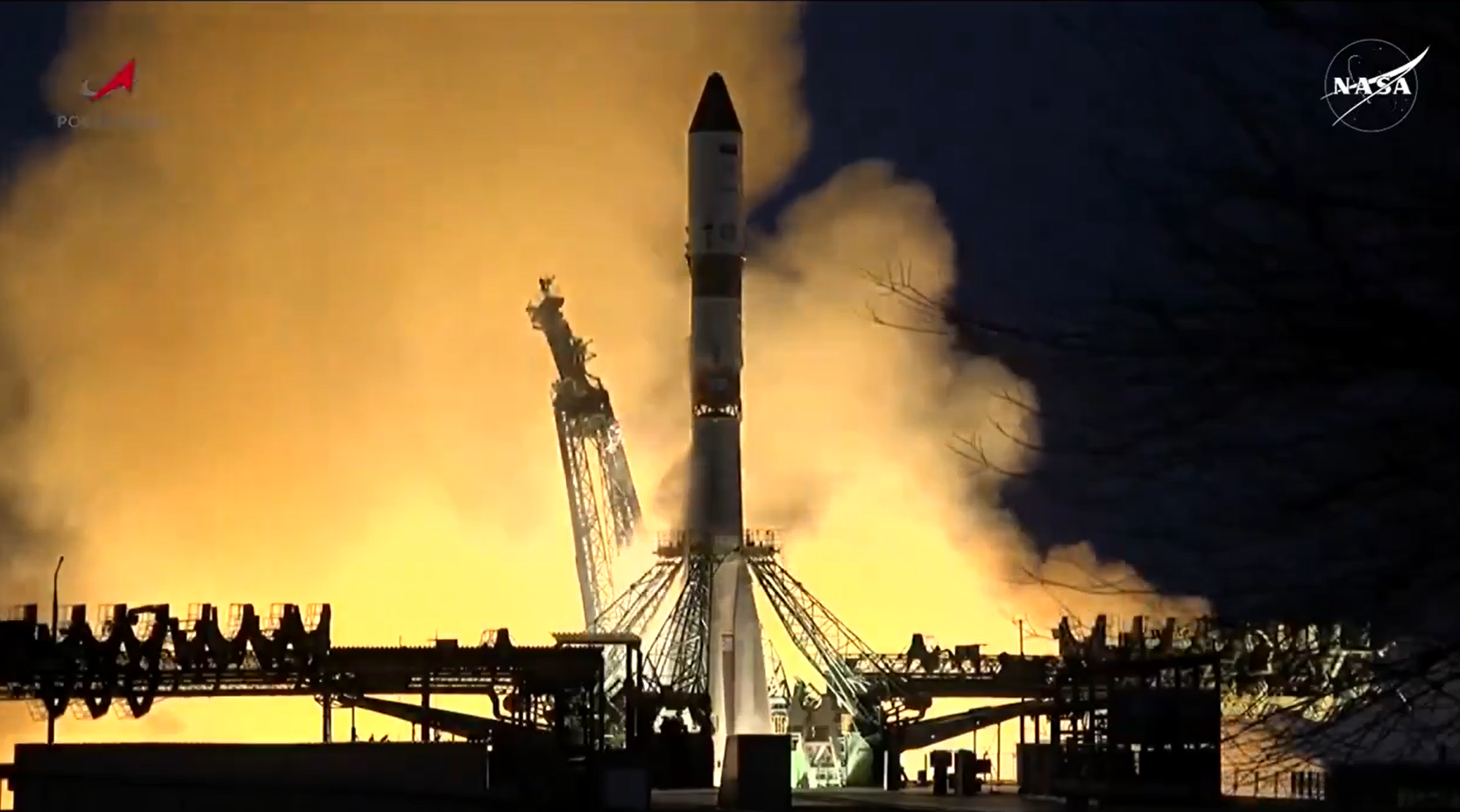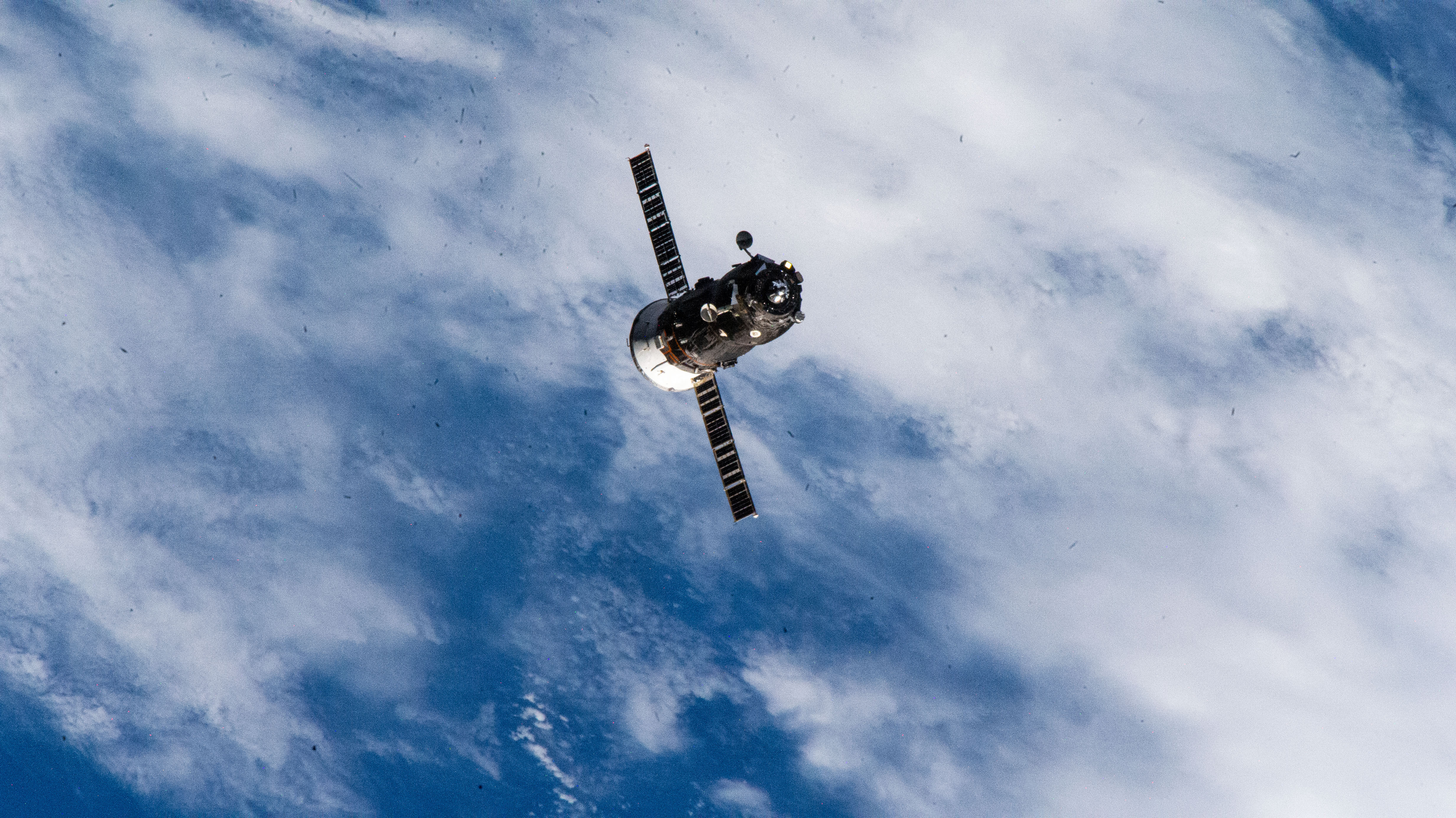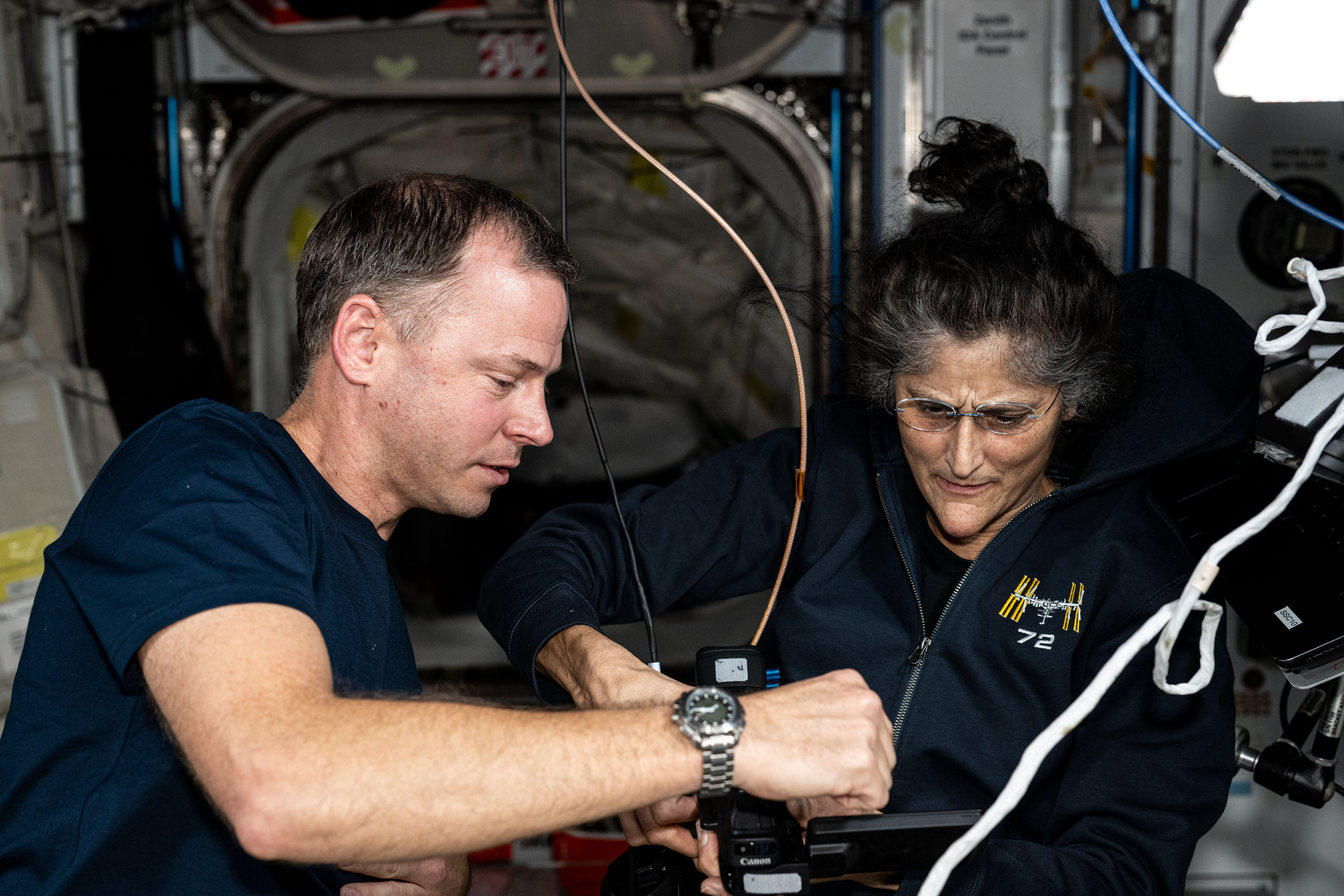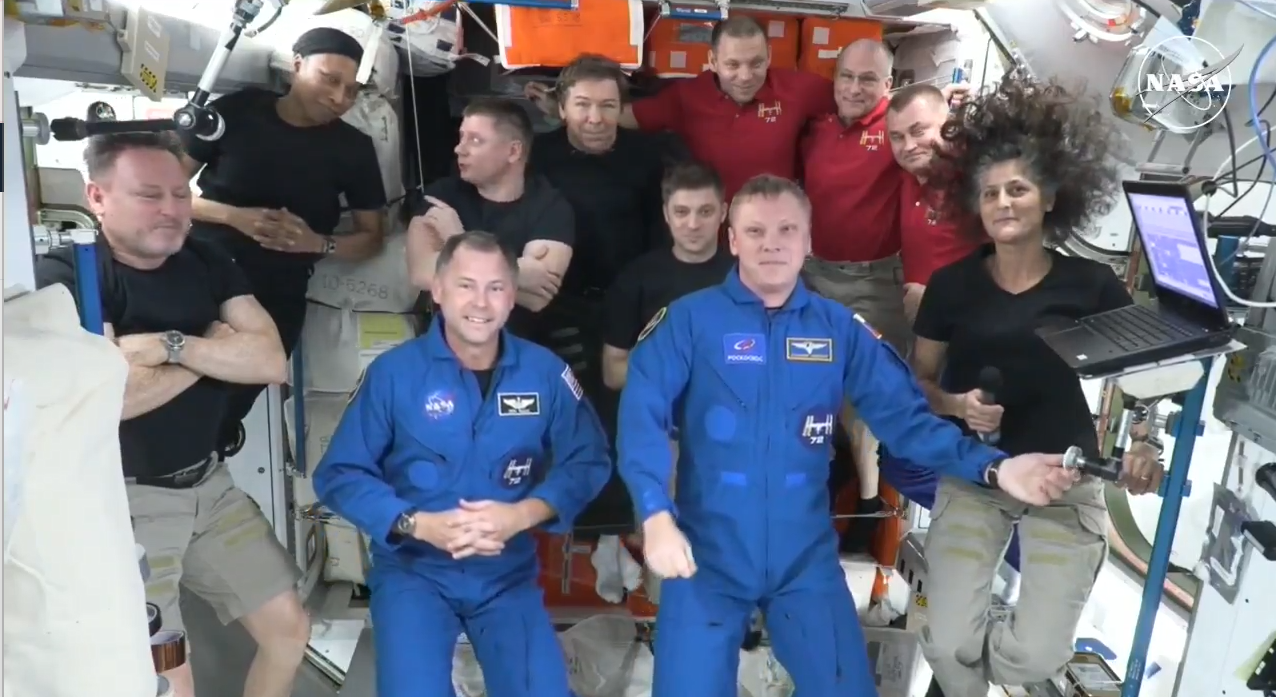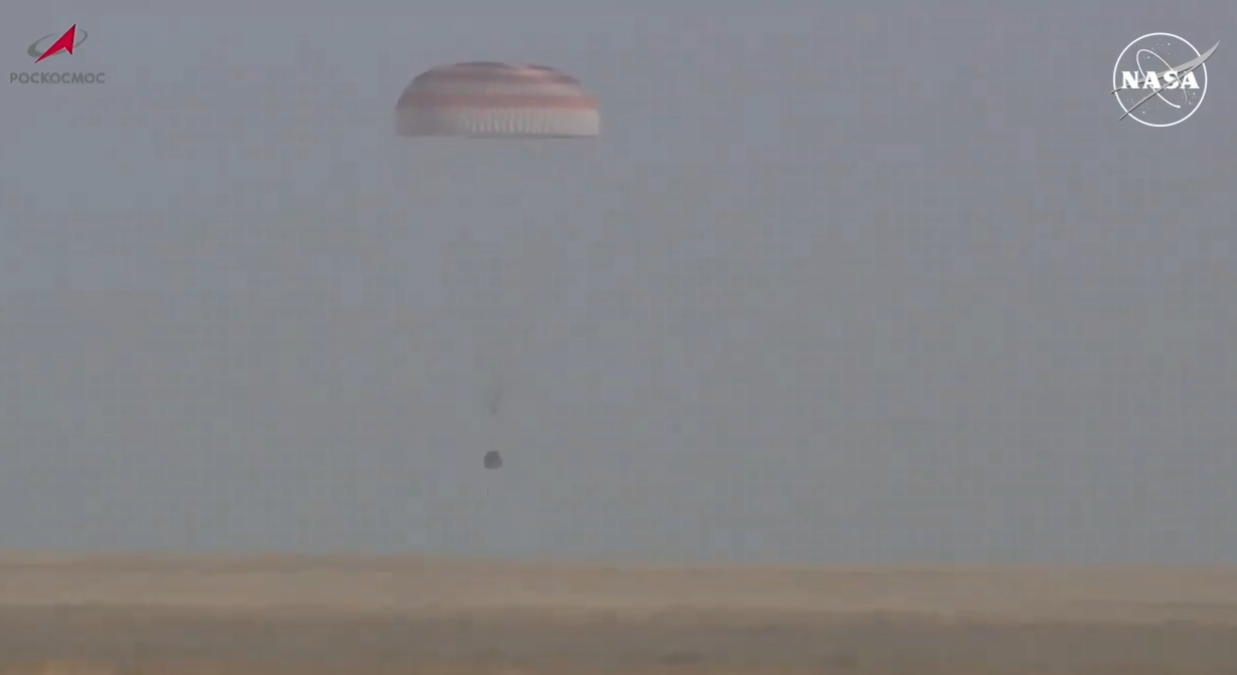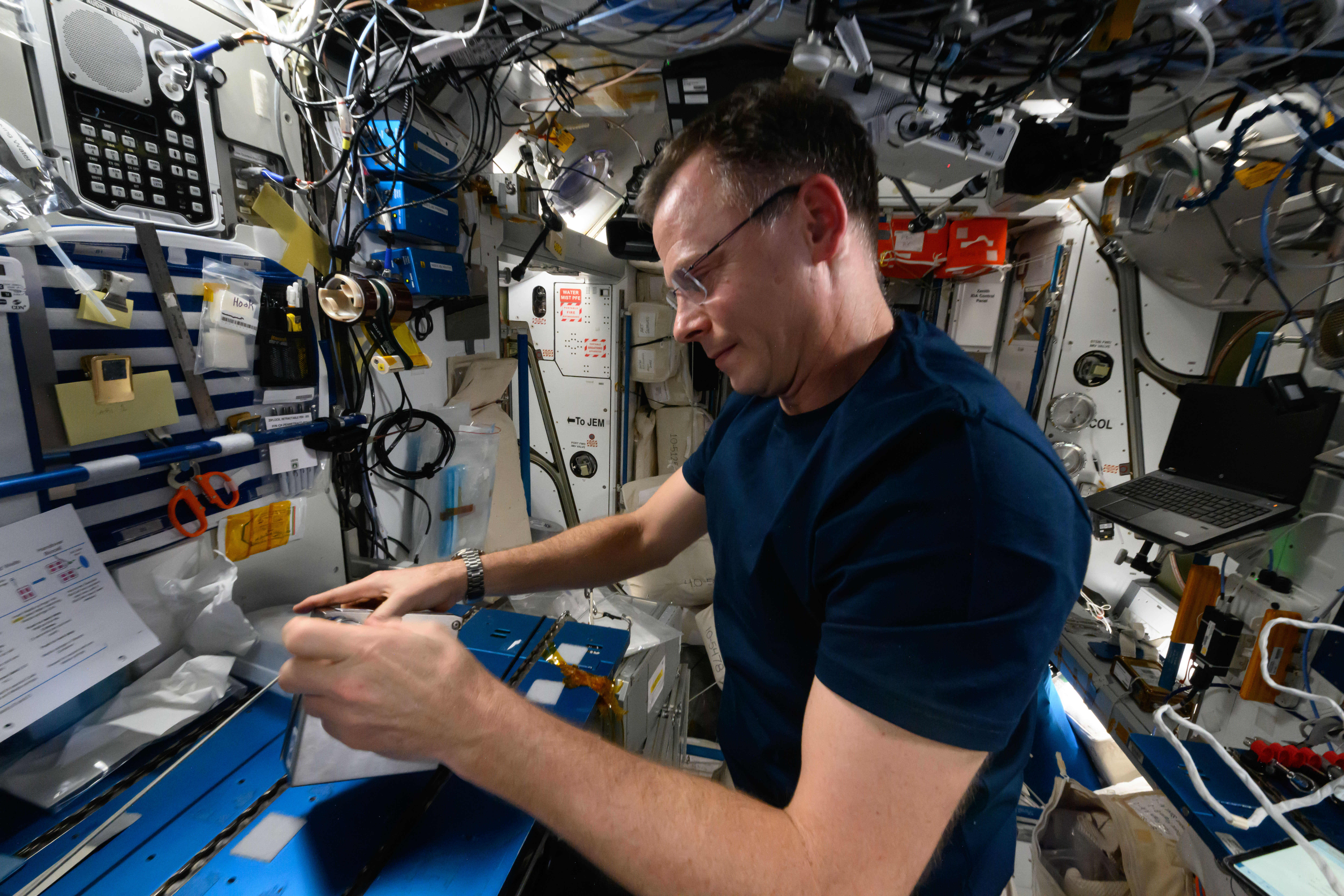
The Expedition 72 crew is back to work following a day off yesterday to observe the Thanksgiving holiday. Space botany experiment prep and cargo operations topped Friday’s schedule aboard the International Space Station as three NASA astronauts prepped the SpaceX Dragon cargo spacecraft for return and another installed science gear that will assess how plants respond to different levels of water.
NASA Flight Engineers Nick Hague, Don Pettit, and Butch Wilmore spent some of the day packing gear for return to Earth inside the SpaceX Dragon cargo spacecraft, which is set to undock from the Harmony module’s forward port on Thursday, Dec. 5. Dragon arrived to the orbiting lab on Nov. 5, delivering over 6,000 pounds of science and cargo to the crew.
Pettit also penciled in some time to answer questions about life in orbit during an amateur radio call with students in Caltanissetta, Italy. Meanwhile, after Wednesday’s processing of radiant-resistant Arthrospira C micro-algae samples, Hague removed the four sample containers and swapped in a new set to the BioLab Incubator. The samples will be exposed to different light intensities to observe how they affect the micro-algae’s cell growth, which could advance spacecraft life support system development and fresh food production on future space missions.
In the Harmony module, station Commander Suni Williams started her day by gathering hardware for future Advanced Plant Habitat operations. She then collected water samples from the device’s distribution reservoir before installing the Plant Habitat-07 science carrier. The science carrier will host “Outredgeous” romaine lettuce plants as they grow in microgravity for crew members to assess how different amounts of water affect the growth of the plants. Results could identify how different moisture environments alter the production and nutritional content of lettuce grown in space and could improve how food crops are grown on Earth.
Near the end of the day, Williams assisted Hague with an ultrasound exam as she scanned veins in his neck, shoulders, and behind the knees.
In the Nauka module, Roscosmos Flight Engineers Alexey Ovchinin and Ivan Vagner rerouted cables throughout the day. Vagner then moved into the Zarya module to assess lighting conditions and later continued to unpack the Progress 90 cargo spacecraft, which docked to the station’s Poisk module on Nov. 23. Flight Engineer Aleksandr Gorbunov completed some computer work before ending his day by practicing his piloting techniques during a Pilot-T session.
Learn more about station activities by following the space station blog, @space_station and @ISS_Research on X, as well as the ISS Facebook and ISS Instagram accounts.
Get weekly updates from NASA Johnson Space Center at: https://roundupreads.jsc.nasa.gov/
Get the latest from NASA delivered every week. Subscribe here: www.nasa.gov/subscribe

